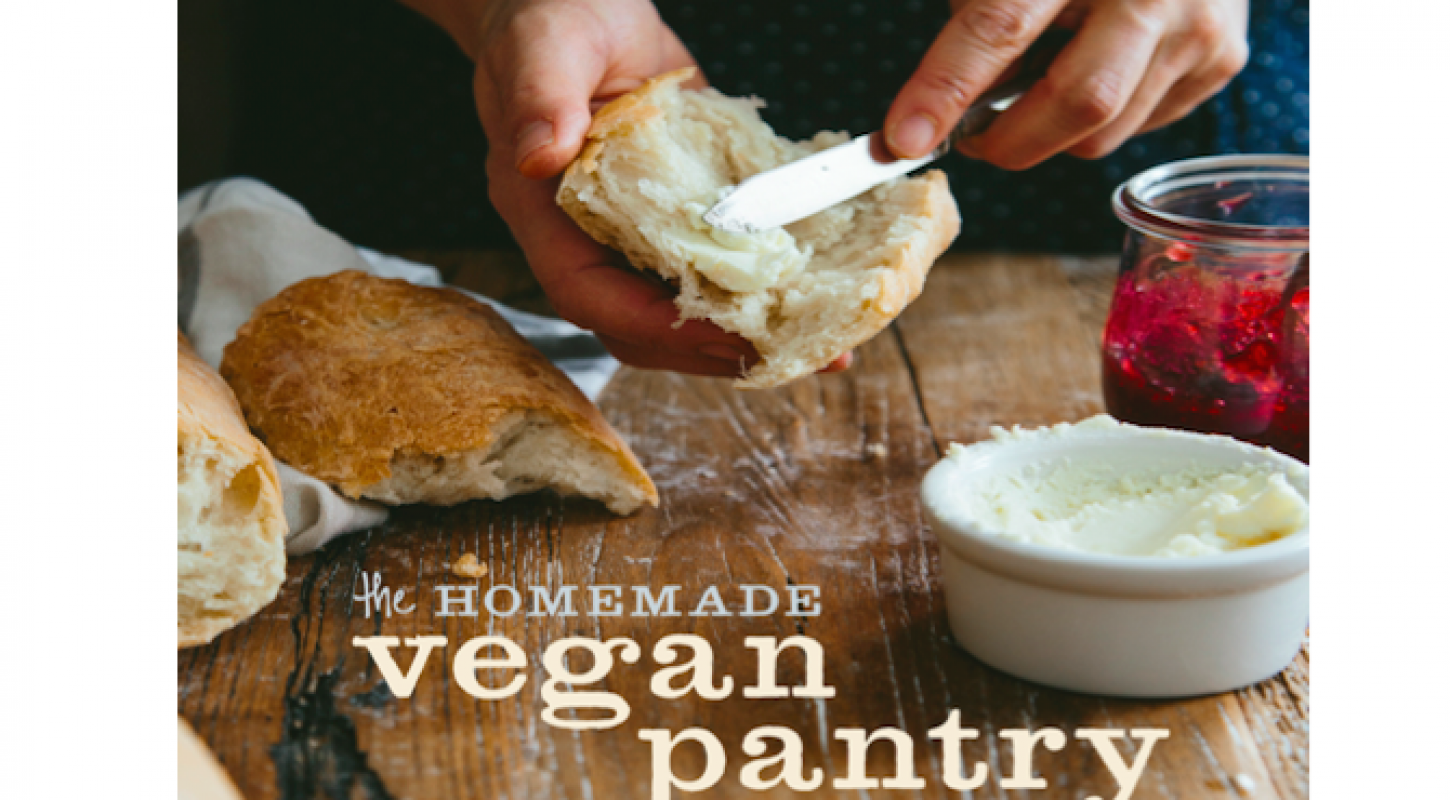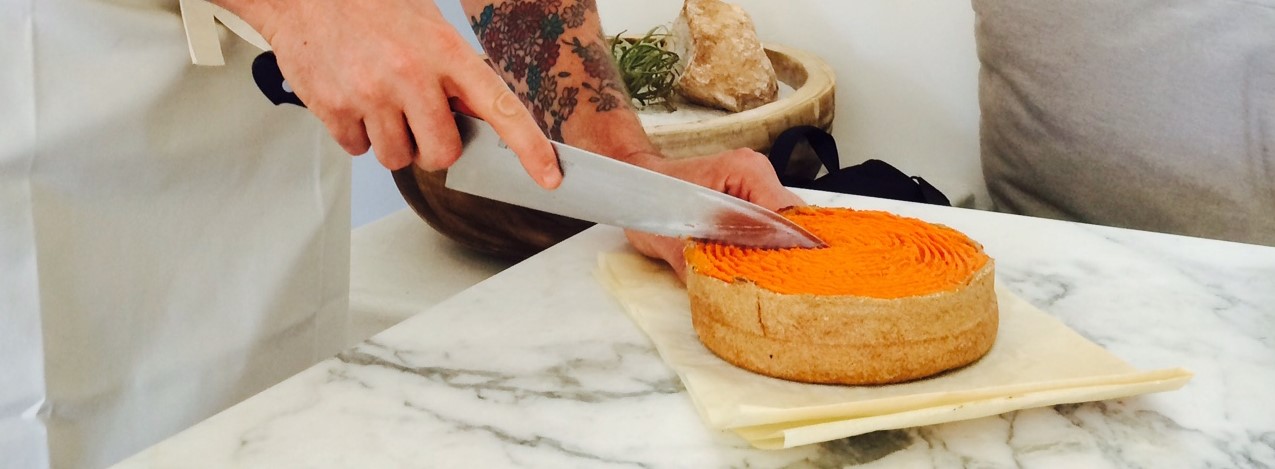Miyoko Schinner’s cookbook, The Homemade Vegan Pantry: The Art Of Making Your Own Staples is on shelves! I am a huge fan of Miyoko. I tried her “cheeses” at the Natural Products Expo West and they are insane!! I love the Classic Double Chive Cream. If you haven’t tried it, you must! Recently we had a special treat and tried all of cheeses from her shop. They are all so good. We put some in a sandwich with sprouts and tomato and it was unreal. Stay tuned for a cheese blog with details on some of my favorite ones. Thanks to her new cookbook, you can whip up some of her magical nut-based cheeses yourself. Check out this Almond Feta recipe from her new book. Thank you for sharing it Miyoko.

Almond Feta from The Homemade Vegan Pantry: The Art of Making Your Own Staples
By Miyoko Schinner
I had almost forgotten the joy that feta cheese can add to dishes. For example, the wonderful Greek spinach pie, spanakopita—I had basically given up on this entirely. I’d made and had many vegan versions of it, but without the briny flavor of feta, the flavors just fell flat. After much knocking around in my noggin, I came up with the perfect vegan substitute. Salty and briny, this feta works beautifully crumbled over salads or slightly melted in all of the traditional dishes. Best of all, stored in brine, it keeps for weeks, getting stronger in flavor and more delicious as time goes by (in fact, it vastly improves after a month, so make this weeks ahead of time if you can).
2 cups blanched almonds, soaked in water for 12 to 24 hours
1 cup Easy Rejuvelac (page 71) or juice from sauerkraut
1/2 teaspoon sea salt
2/3 cup water
2 tablespoons agar powder
BRINE
6 cups water
3/4 cup sea salt or kosher salt
Drain and rinse the almonds. Place them in a high-speed blender with the rejuvelac and salt, and process on the highest setting for 1 to 2 minutes until smooth and no longer grainy to the tongue. Pour the mixture into a clean container and cover with a nonpermeable lid or plastic wrap. Leave on your kitchen counter for 1 to 2 days to culture, making sure you taste it each day, until it begins to get tangy. Keep in mind there is no hard and fast rule about how long it needs to culture—your taste buds will have to guide you in determining the right length of time. In warmer weather, it could be just a day, while in cooler weather, it could take 2 days or even longer.
Once the cheese is slightly tangy, you can move onto solidifying it. First, prepare the mold for the cheese by lining an 8-inch square pan with cheesecloth. Combine the water and agar in a medium saucepan and whisk well. Cover the pan with a lid and bring to a simmer over low heat. Don’t peek for 3 to 4 minutes, then check to see if it is bubbling away. At first, if you peek too early, it may look as if it has solidified. However, if you let it simmer over low heat for a couple of minutes more, it will start to liquefy again and bubble away. When the agar is fully dissolved, pour in the cultured almond mixture and whisk immediately until fully combined. Pour the cheese mixture into the cheesecloth-lined pan. Refrigerate for several hours, until hard.
Prepare the brine by whisking together the water and the salt in a large bowl until most of the salt is dissolved. Cut the cheese into four pieces and place in the brine. Cover and let sit for 8 hours at room temperature. Transfer the cheese to a storage container and pour the brine over the cheese until it is halfway submerged. Add more plain water to completely cover the cheese and dilute the brine. Store in the refrigerator for up to 3 or 4 months. The flavor vastly improves after the first 3 to 4 weeks.
MAKES 1 POUND
There are lots of ways to show love and appreciation during the holidays…




